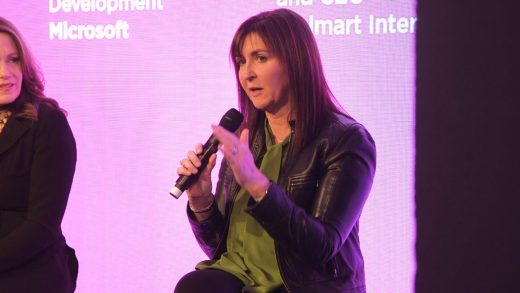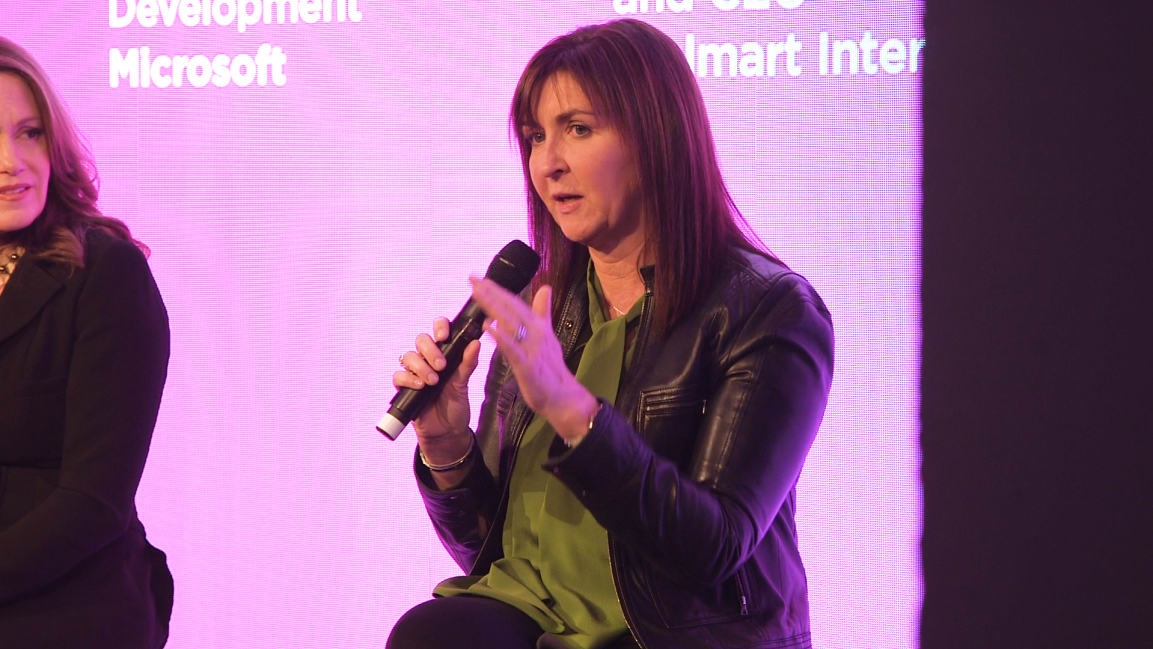Walmart International CEO: Workplace education is not just about “competitive advantage”
“I’m an optimist,” Walmart International president and CEO Judith McKenna proclaimed Wednesday morning. She was talking about the inevitability that technological advances would lead to the obsolescence of some jobs. “As roles are changing, new roles are emerging.” She was sitting alongside a group of other business leaders—including Adobe’s Scott Belsky, Microsoft’s Peggy Johnson, and General Assembly’s Jake Schwartz.
The four are all attending the World Economic Forum in Davos, Switzerland, this week, the annual gathering of world leaders. Fresh in many people’s minds is how work is changing at a rapid clip. New technologies are leading to more automation—and businesses are being forced to think about how this could change their workforce. This issue permeated the Fast Company-led panel today in Davos.
To deal with this need to modernize, McKenna said Walmart spent the last few years building an employee training program that can truly scale. Its “Academy” program, she explained, gave associates the opportunity to “learn the skills to do their jobs, learn leadership skills, learn digital.” While job training has become more and more necessary, McKenna said the part of the intention is to have a continuing education program. “It’s not a once and done,” she said, “you have to keep going with people.”
“Last year we trained 500,000 through [Academies],” said McKenna. Other than the U.S. military, she went on, it was the largest national training program. More and more this is becoming the new normal. And, explained the Walmart executive, its representative of a shift in how companies are approaching the need to engage employees.
“I do think businesses are starting to make different business decisions,” she explained. Companies have to figure out how to balance new tech making things more efficient with the needs of the human workers. One way to do this is to train employees to have them ready for new opportunities.
Concurrent with this is the imperative to make sure that the entire workforce is on board with the company’s stated values. Peggy Johnson, executive vice president at Microsoft, described how her organization rethought its internal ethos. The idea was to go “from being the know-it-all in the room to being the learn-it-all,” she said. Most important was that every Microsoft employee was on board. This “consistency of message,” Johnson added, “was what helped us engage all those 130,000 employees.”
More than just a competitive advantage
Education and training is certainly one way to ensure employee success. Broader than that, however, is the need for companies to realize why they need to invest more in employees. “You have to send strong signals,” said Adobe’s Belsky, “you have to retool the way you make things.”
Johnson pointed to a yearly hackathon meant to foster collaboration between Microsoft teams. “We have not just engineers, but lawyers and finance people [who] come together and look at problems differently. What has come out is a plethora of ideas.”
McKenna added that organizations can no longer be doing this just for their own survival. “I think businesses have got to stop thinking [these employee enrichment programs] are a competitive advantage.” It’s simply what companies must do to retain and empower talent, she says. In terms of skills training for a specific role, McKenna described a mindset shift. “In the future, the job may not be with my organization, it may be [elsewhere].” Still, she explained to the audience, that’s just fine.
Davos Dialogues, a series of editorial panels, videos, and news coverage, is produced in partnership with HCL Technologies.
(16)



